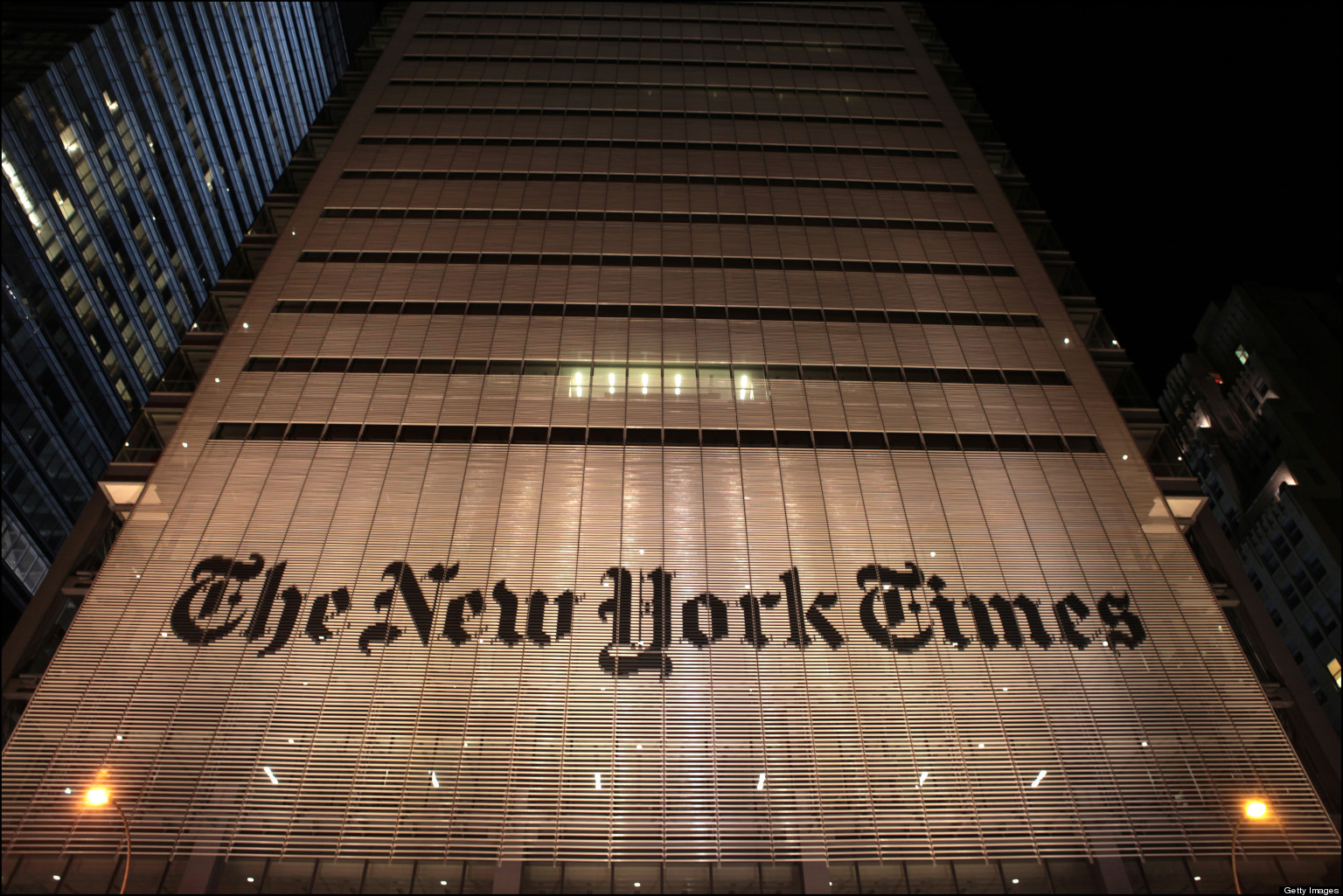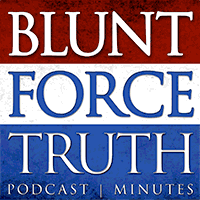 TEL AVIV — The New York Times published an article using an unsupported argument already negated by the CIA’s former director, John Brennan, as well as a recent extensive Washington Post article, to explain why all 17 of the United States’ intelligence agencies did not assess charges that Russia interfered in the 2016 presidential election.
TEL AVIV — The New York Times published an article using an unsupported argument already negated by the CIA’s former director, John Brennan, as well as a recent extensive Washington Post article, to explain why all 17 of the United States’ intelligence agencies did not assess charges that Russia interfered in the 2016 presidential election.
This after the Times recently had to issue an editor’s note clarifying that the Russian interference conclusion was drawn by “four intelligence agencies” and not 17, as the Times and major news agencies worldwide falsely reported.
Ironically, after propagating the falsehood about 17 U.S. intelligence agencies, the Times’ latest misleading claim comes in the form of an article last Thursday titled, “Trump Misleads on Russian Meddling: Why 17 Intelligence Agencies Don’t Need to Agree.”
The Times was referring to the January 6, 2017 U.S. Intelligence Community report alleging Russian interference in the presidential race.
The report on Russia was the product of only three intelligence agencies – the FBI, CIA and National Security Agency. In its clarification, the Times wrote that the Russian interference conclusion was drawn by “four intelligence agencies” – including James Clapper’s Office of the Director of National Intelligence, which issued the January 6 report although its conclusions were not included in the report itself.
Without citing evidence, the Times in its latest article on the subject offers its own explanation as to why the other thirteen intelligence agencies were not included in the assessment about alleged Russian interference:
The Times is clearly arguing that the other intelligence agencies were simply dedicated to other national security efforts.
The Times‘ claim stands in contrast to testimony from former CIA Director Brennan as well as information provided in an extensive, 7,700-plus word Washington Post article published June 23 detailing the highly compartmentalized nature of the Russia interference investigation and the manner in which other U.S. intelligence agencies were deliberately kept in the dark.
At a House Intelligence hearing on May 23, Brennan testified that the FBI, CIA and NSA investigation was deliberately “tightly compartmented” from other intelligence agencies.
Asked about the methods used to compile the January 6 U.S. Intelligence Community report on Russia, Brennan stated:
I think it followed the general model of how you want to do something like this with some notable exceptions.It only involved the FBI, NSA and CIA as well as the Office of Director of National Intelligence; it wasn’t a full interagency community assessment that was coordinated among the 17 agencies and for good reason, because of the nature, the sensitivity of the information trying to, once again, keep them tightly compartmented.
The Washington Post, in its extensive June 23 article, reported on details of the compartmentalized operation that indicates a high degree of secrecy involving top Obama administration officials.
According to the newspaper, in the summer of 2016 Brennan convened a “secret task force at CIA headquarters composed of several dozen analysts and officers from the CIA, the NSA and the FBI.”
The Post described the unit as so secretive it functioned as a “sealed compartment” hidden even from the rest of the U.S. intelligence community; a unit whose workers were all made to sign additional non-disclosure forms.
The unit reported to top officials, the newspaper documented:
They worked exclusively for two groups of “customers,” officials said. The first was Obama and fewer than 14 senior officials in government. The second was a team of operations specialists at the CIA, NSA and FBI who took direction from the task force on where to aim their subsequent efforts to collect more intelligence on Russia.
The number of Obama administration officials who were allowed access to the Russia intelligence was also highly limited, the Post reported. At first only four senior officials were involved: Brennan, Clapper, Attorney General Loretta Lynch and James Comey. Their aides were all barred from attending the initial meetings, the Post stated.
The newspaper continued:
Gradually, the circle widened to include Vice President Biden and others. Agendas sent to Cabinet secretaries — including John F. Kerry at the State Department and Ashton B. Carter at the Pentagon — arrived in envelopes that subordinates were not supposed to open. Sometimes the agendas were withheld until participants had taken their seats in the Situation Room.
Adding another layer of secrecy, the newspaper reported that when the closed Cabinet sessions on Russia began in the White House Situation Room in August, the video feed from the main room was cut off during the meetings. The feed, which allows only for video and not audio, is usually kept on so that senior aides can see when a meeting takes place.
The paper reported:
The blacked-out screens were seen as an ominous sign among lower-level White House officials who were largely kept in the dark about the Russia deliberations even as they were tasked with generating options for retaliation against Moscow.
Over the last two weeks, the Times, the Associated Press and other news agencies were forced to correct the falsehood that 17 agencies representing the U.S. intelligence community concluded that Russia attempted to influence the presidential election.
The false anti-Trump talking point was amplified last October, when Hillary Clinton wrongly stated the following at the third presidential debate: “We have 17, 17 intelligence agencies, civilian and military, who have all concluded that these espionage attacks, these cyber-attacks, come from the highest levels of the Kremlin. And they are designed to influence our election. I find that deeply disturbing.”
In its latest article on the 17 intelligence agencies, the Times took issue with a statement Trump made last Thursday at a news conference in Poland in which he was commenting on the January 6, 2017 U.S. Intelligence Community report.
“Let me just start off by saying I heard it was 17 agencies,” Trump told reporters.
“I said, ‘Boy, that’s a lot.’ Do we even have that many intelligence agencies, right? Let’s check it. And we did some very heavy research,” Trump continued. “It turned out to be three or four — it wasn’t 17 — and many of your compatriots had to change their reporting, and they had to apologize, and they had to correct.”
Within the article, the Times allowed that Trump’s statement was actually accurate. It is the Times that distorted Trump’s statement to make its charge that the U.S. president was being misleading.
The Times claims:
Mr. Trump was also correct about inaccurate news reports. Some, including an article in the New York Times, incorrectly reported that all 17 American intelligence agencies had endorsed the assessment.But there is no evidence that significant uncertainty or dissent exists across the intelligence community, simply because not all 17 were involved in the assessment of Russian interference.
Yet Trump never said that there was dissent across the intelligence community on the Russian interference issue. He factually stated that the news media wrongly propagated a false claim that 17 intelligence agencies made conclusions about alleged Russian interference.
(First reported by Breitbart News) http://www.breitbart.com/big-journalism/2017/07/10/new-york-times-misleads-u-s-intel-agencies-russia-interference-assessment/ (July 10, 2017)
Want more BFT? Leave us a voicemail on our page or follow us on Twitter @BFT_Podcast and Facebook @BluntForceTruthPodcast. We want to hear from you! There’s no better place to get the #BluntForceTruth.







